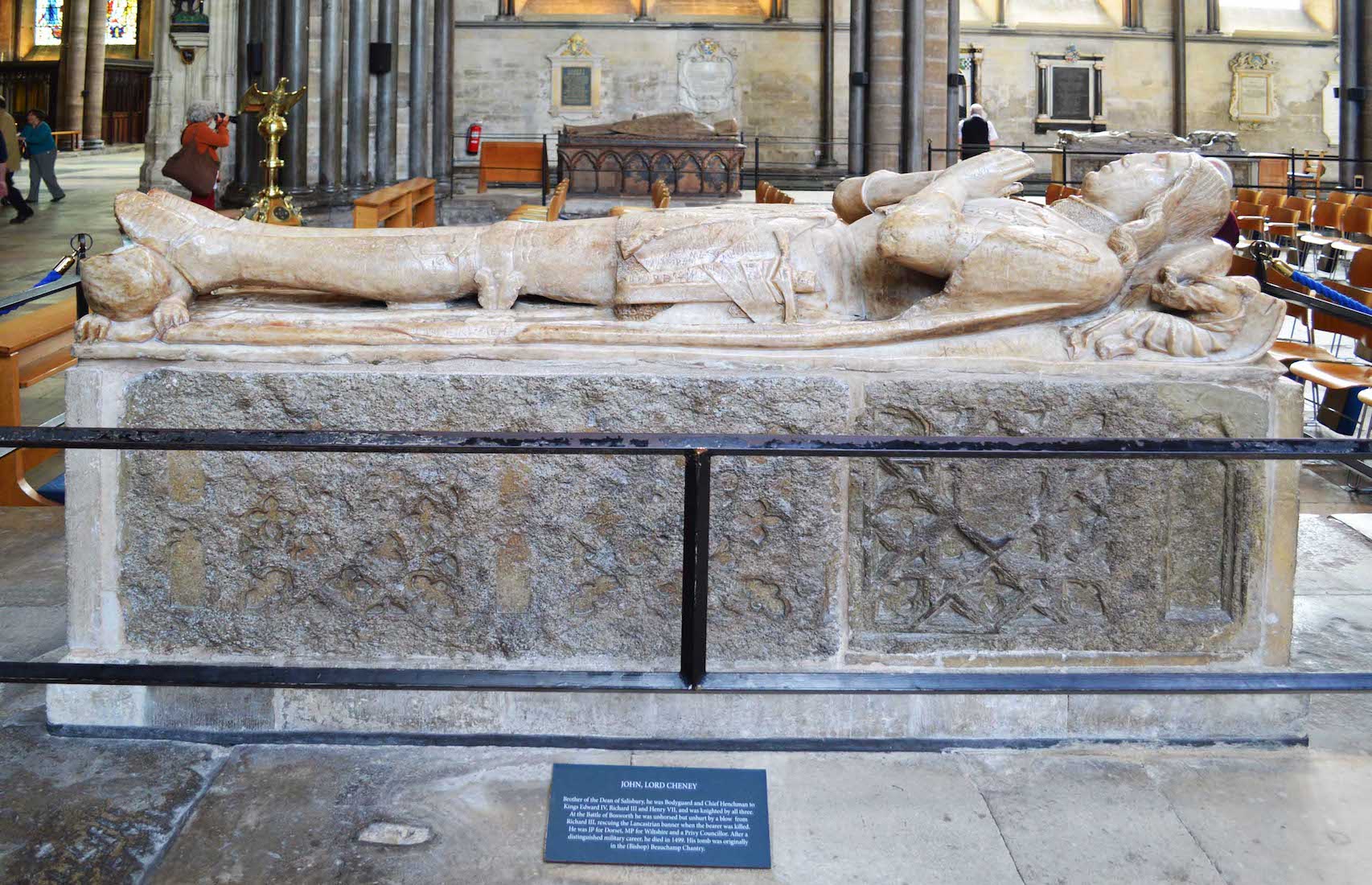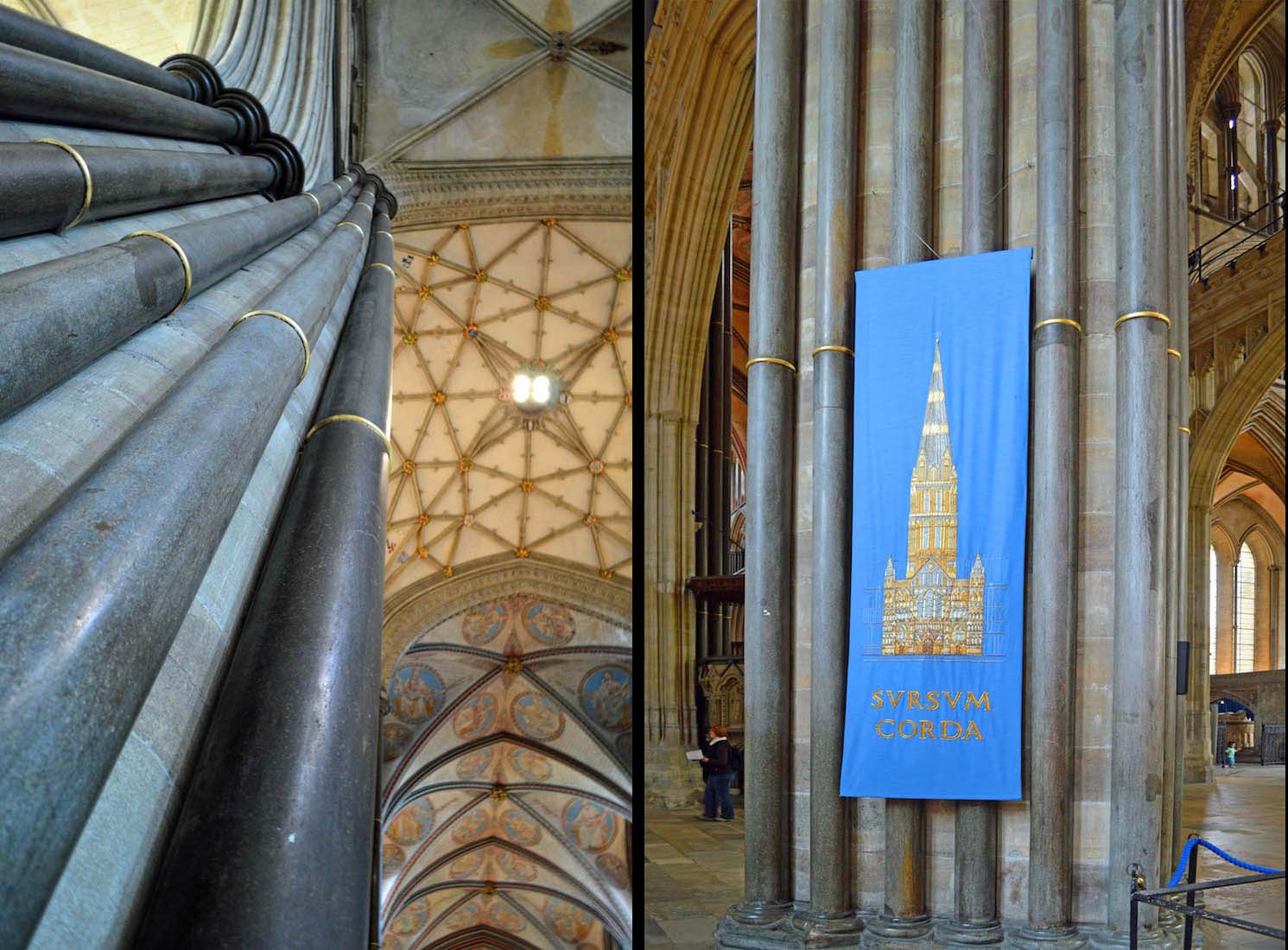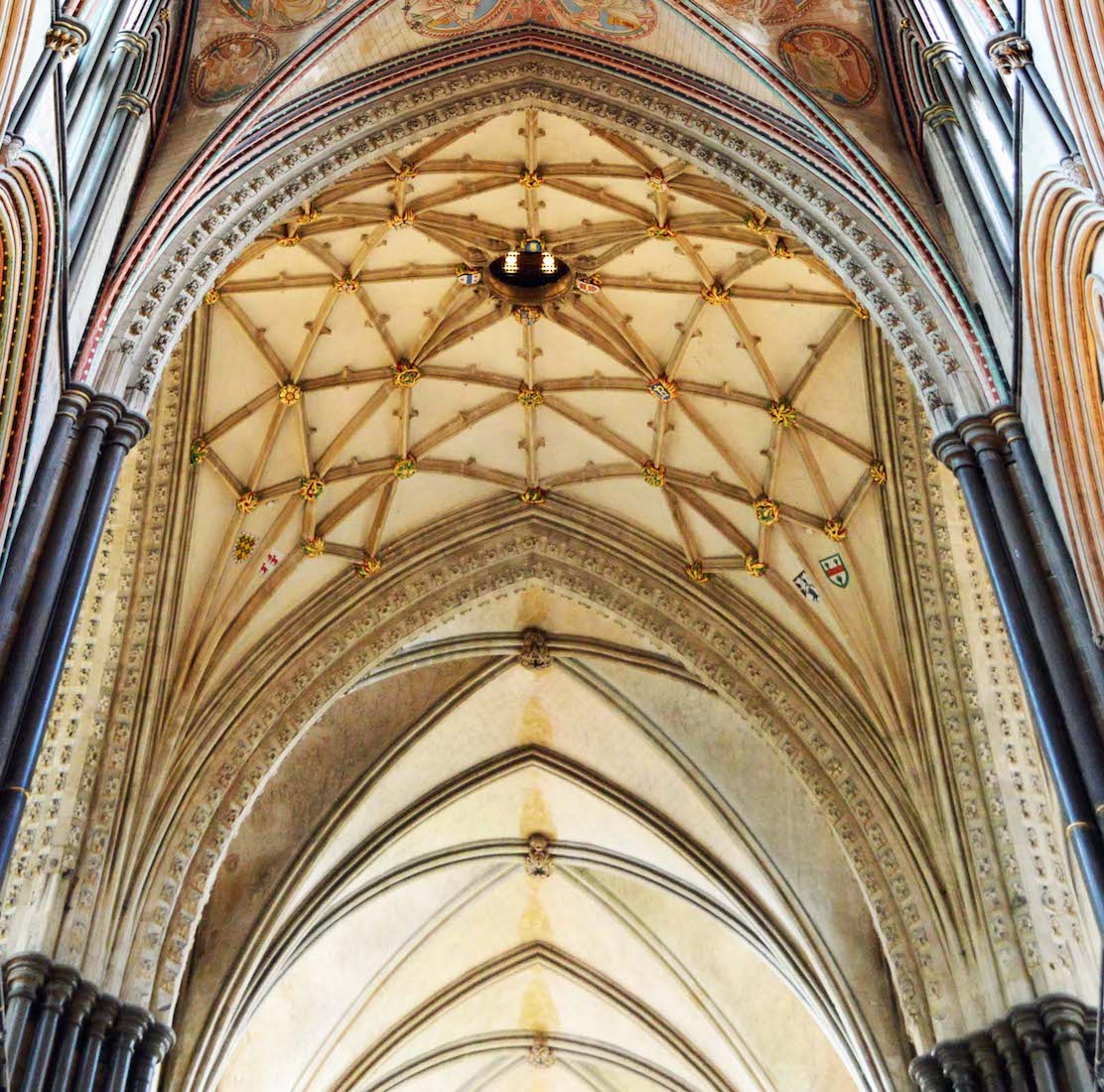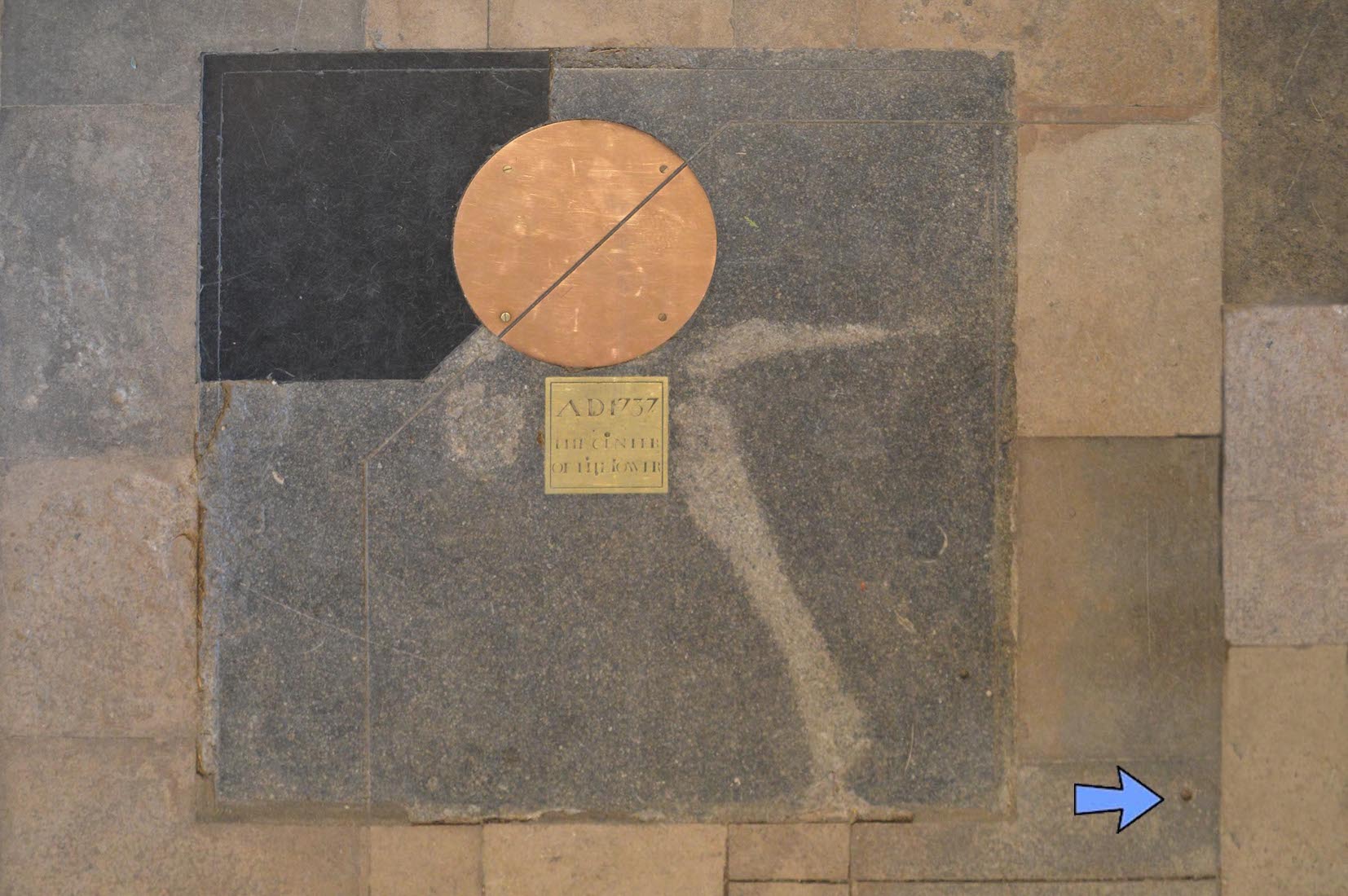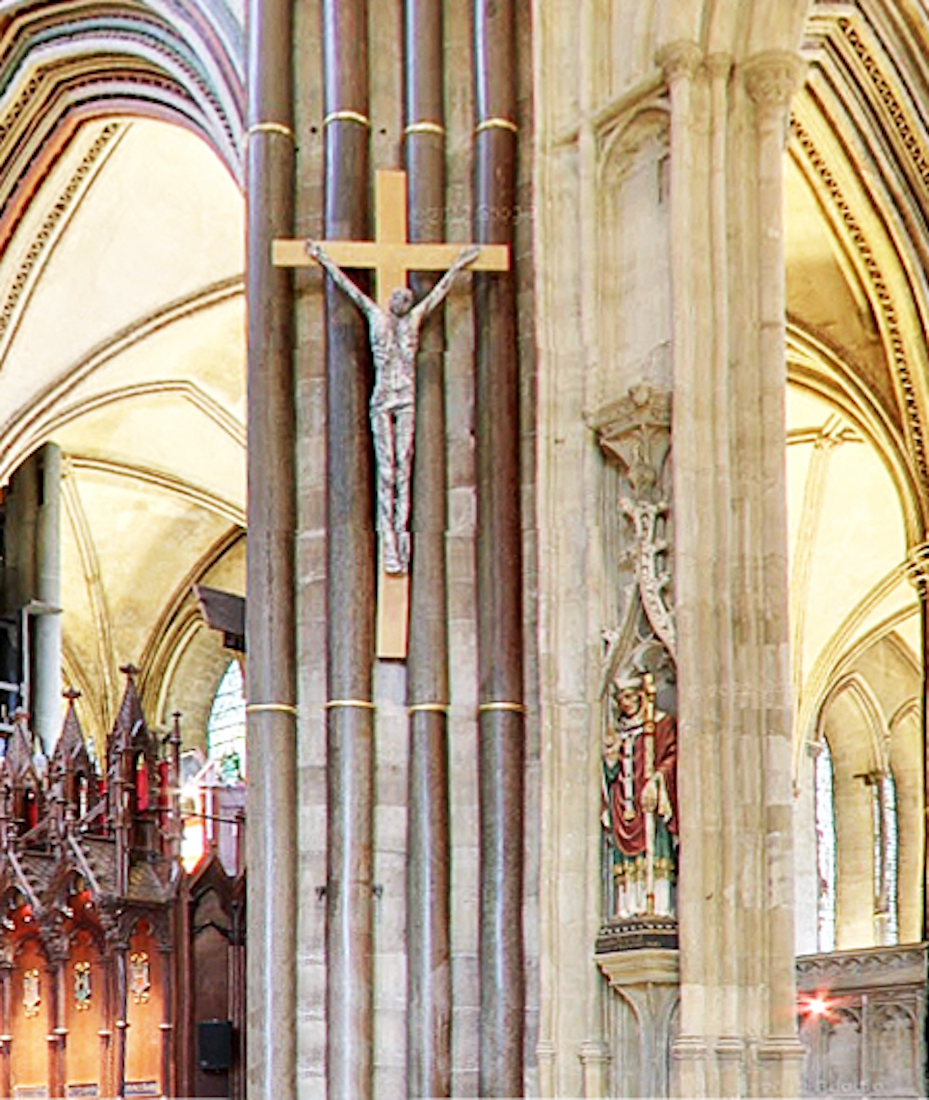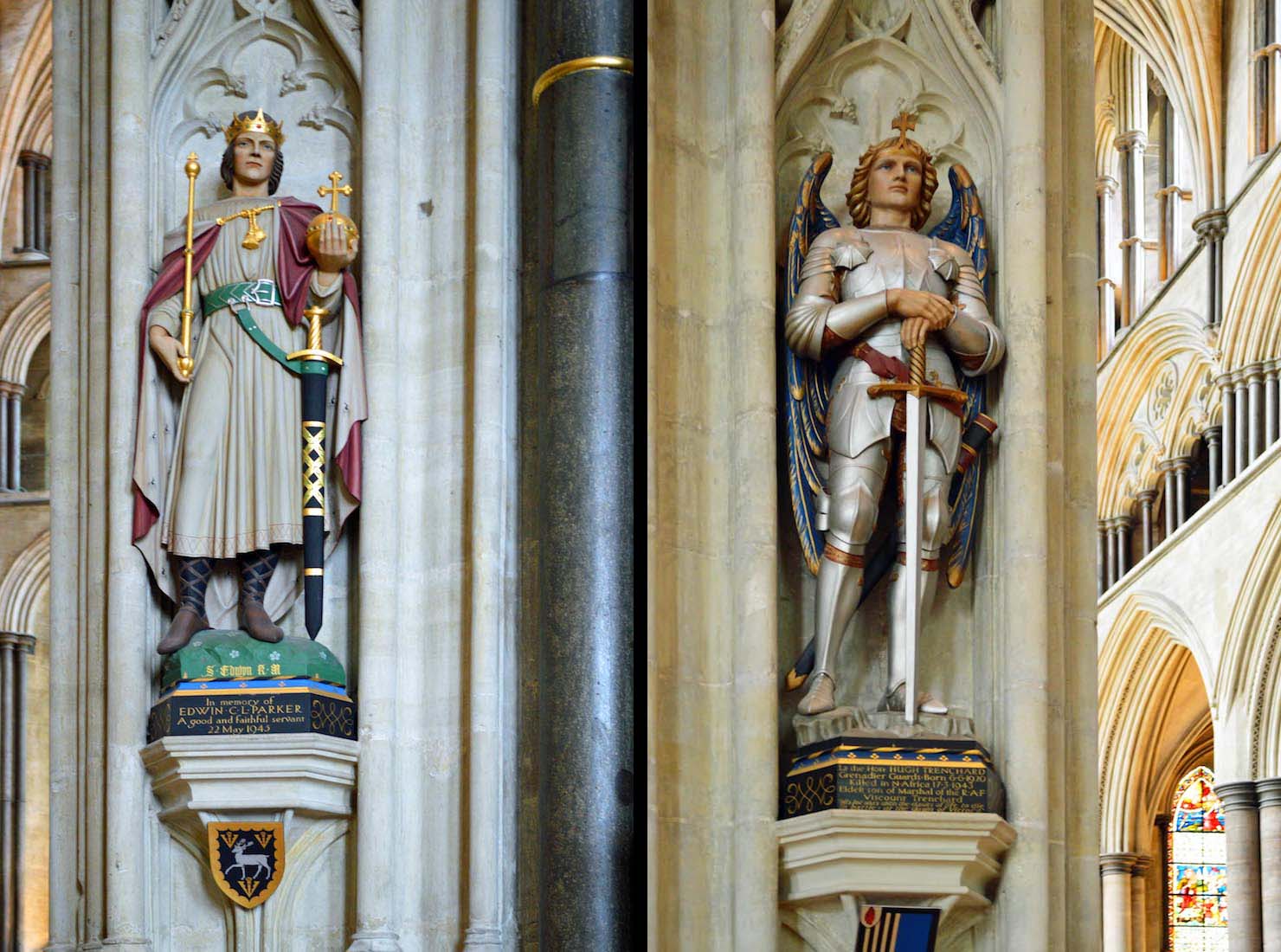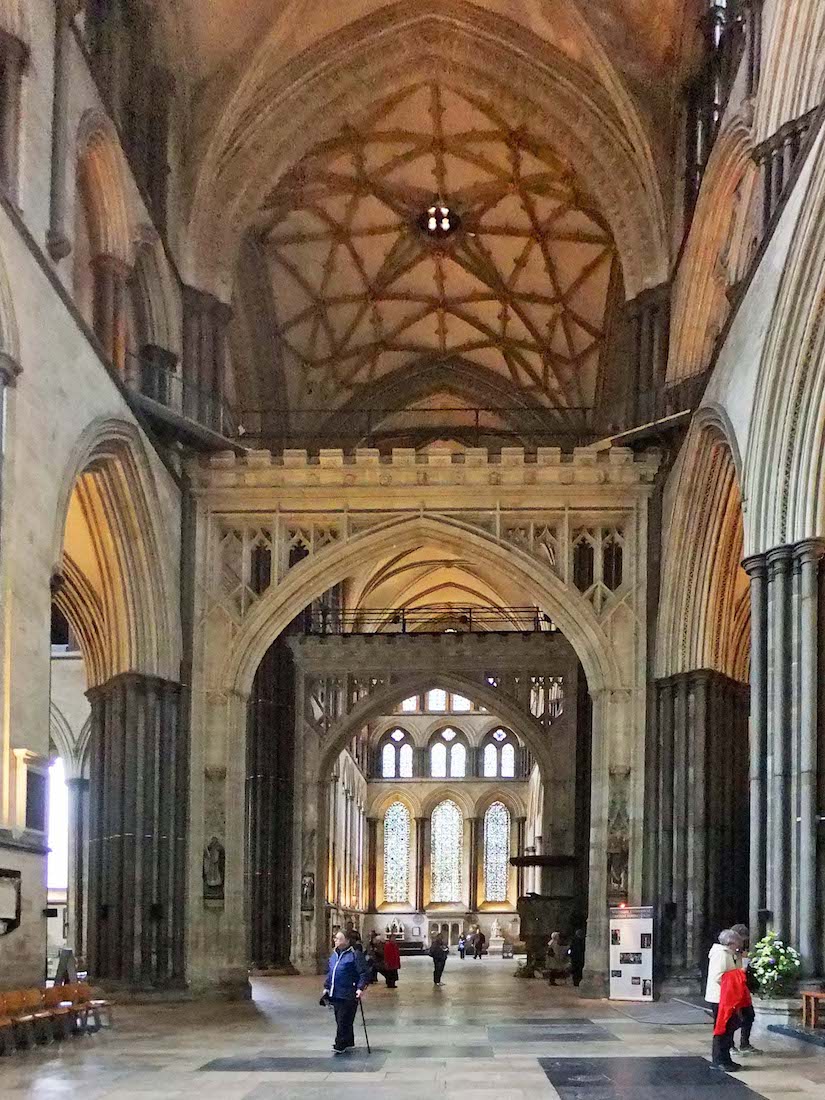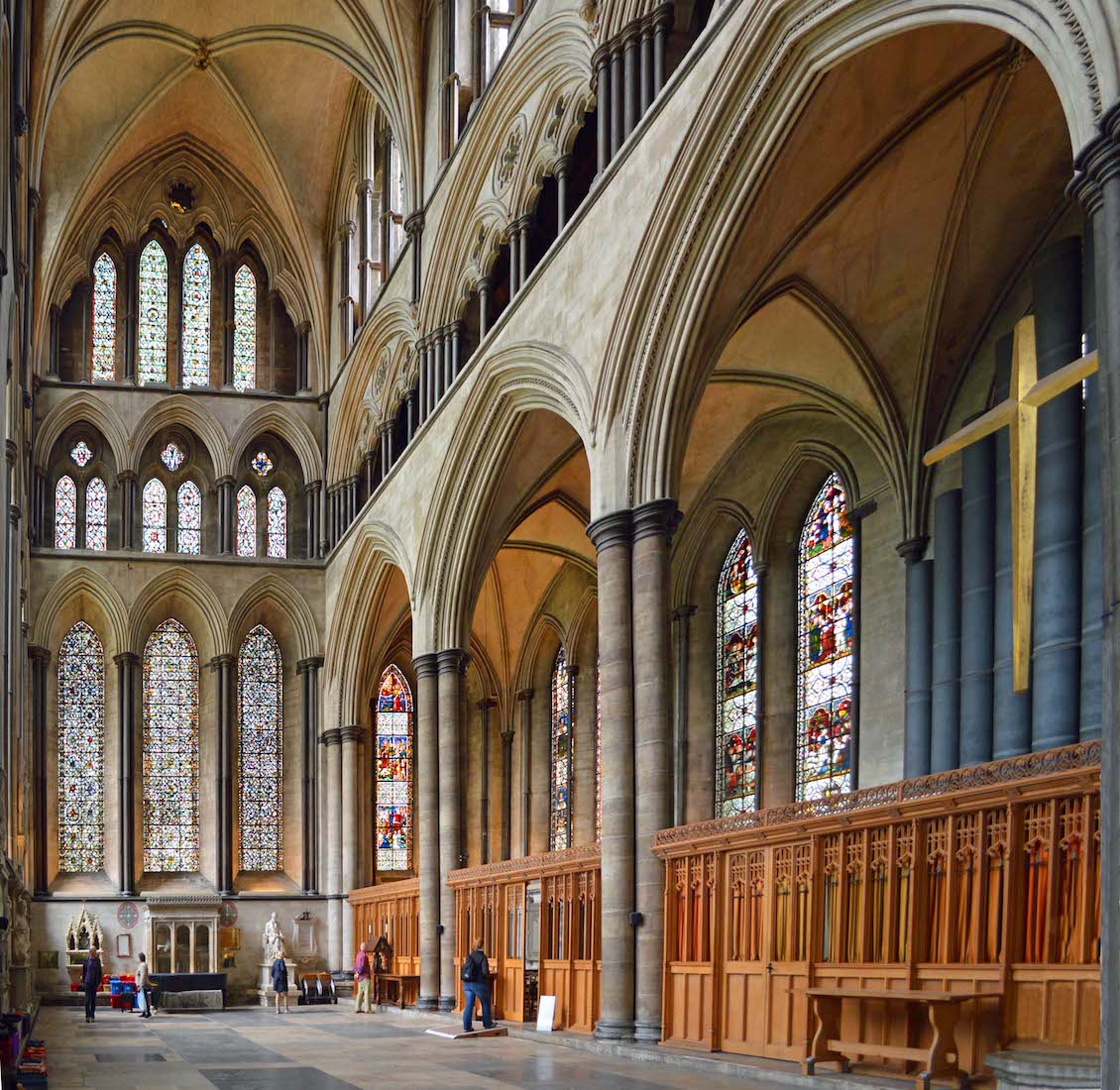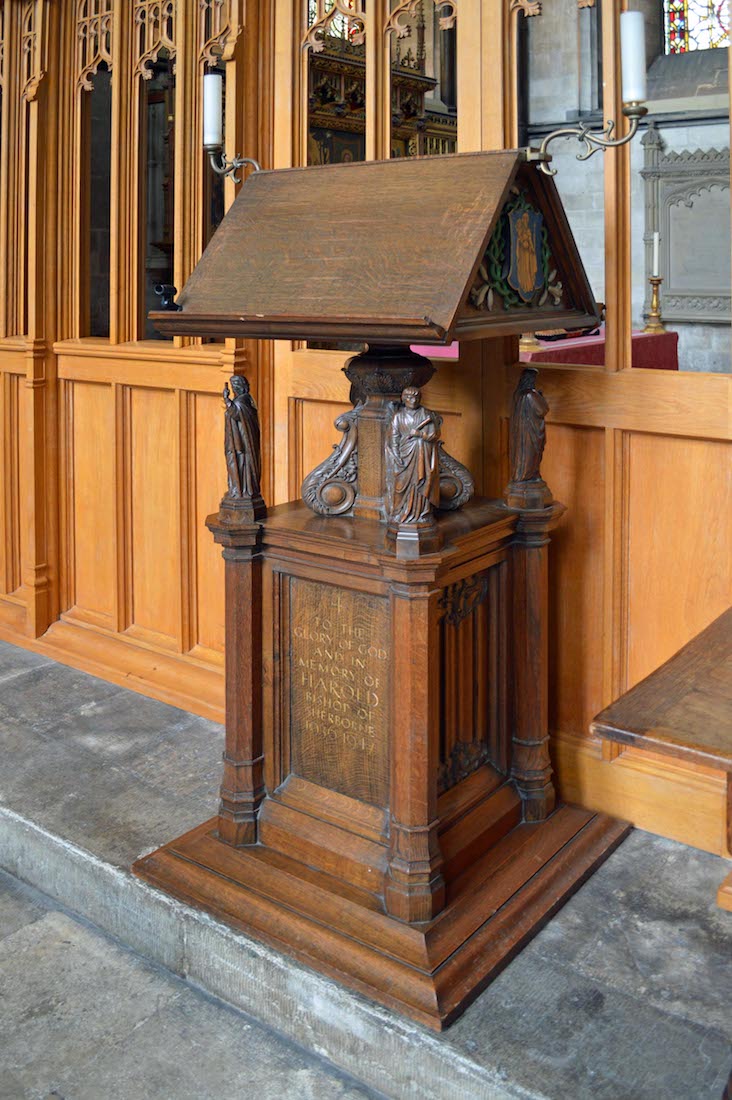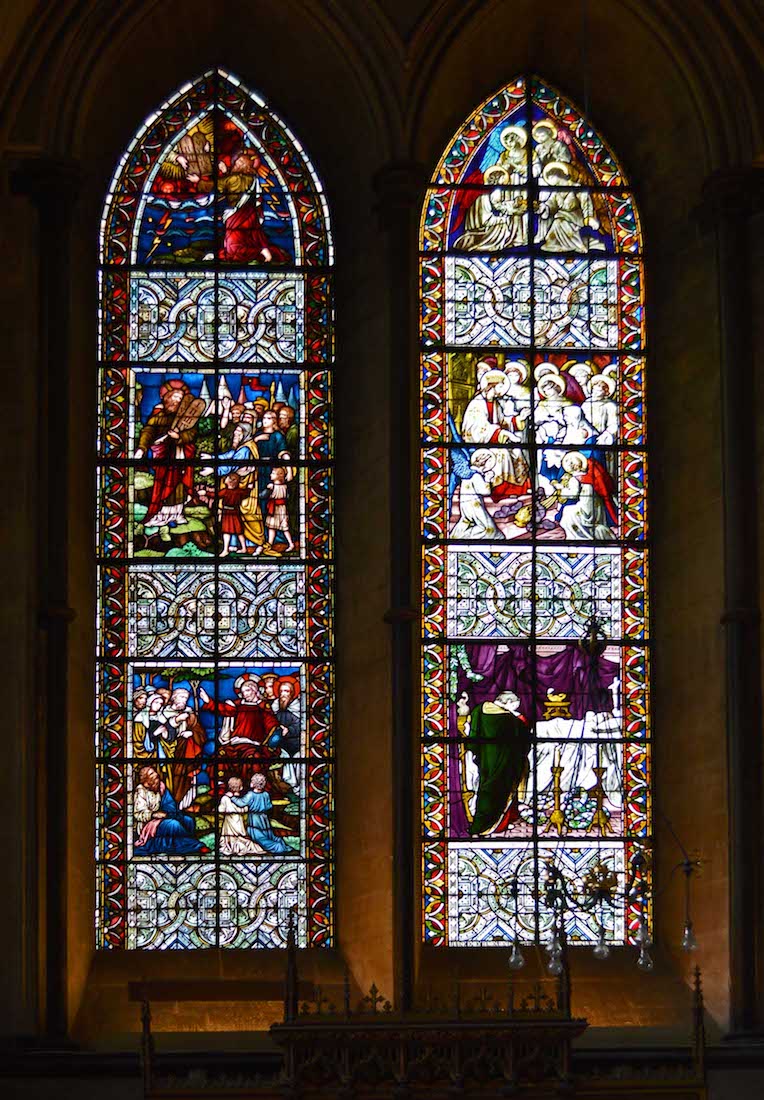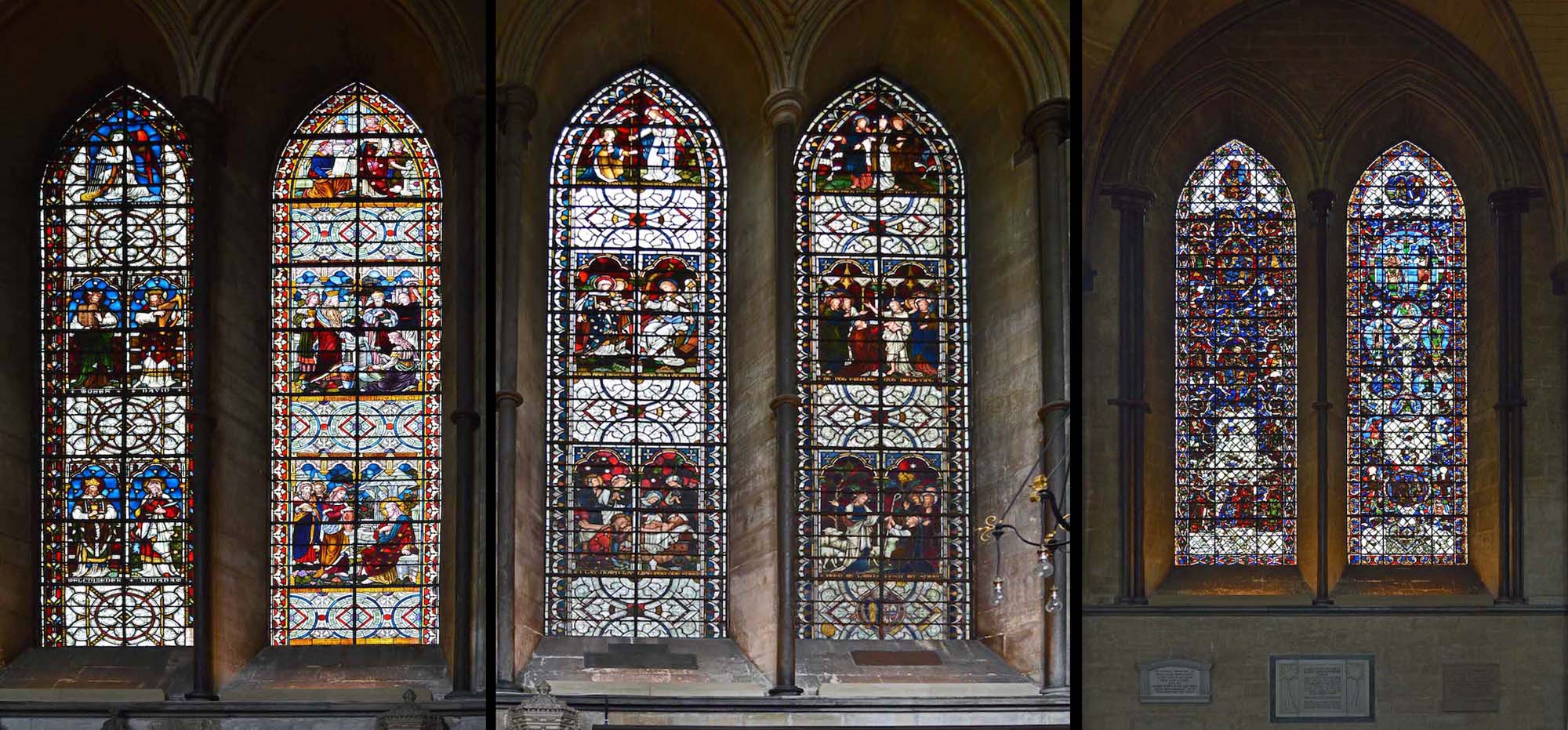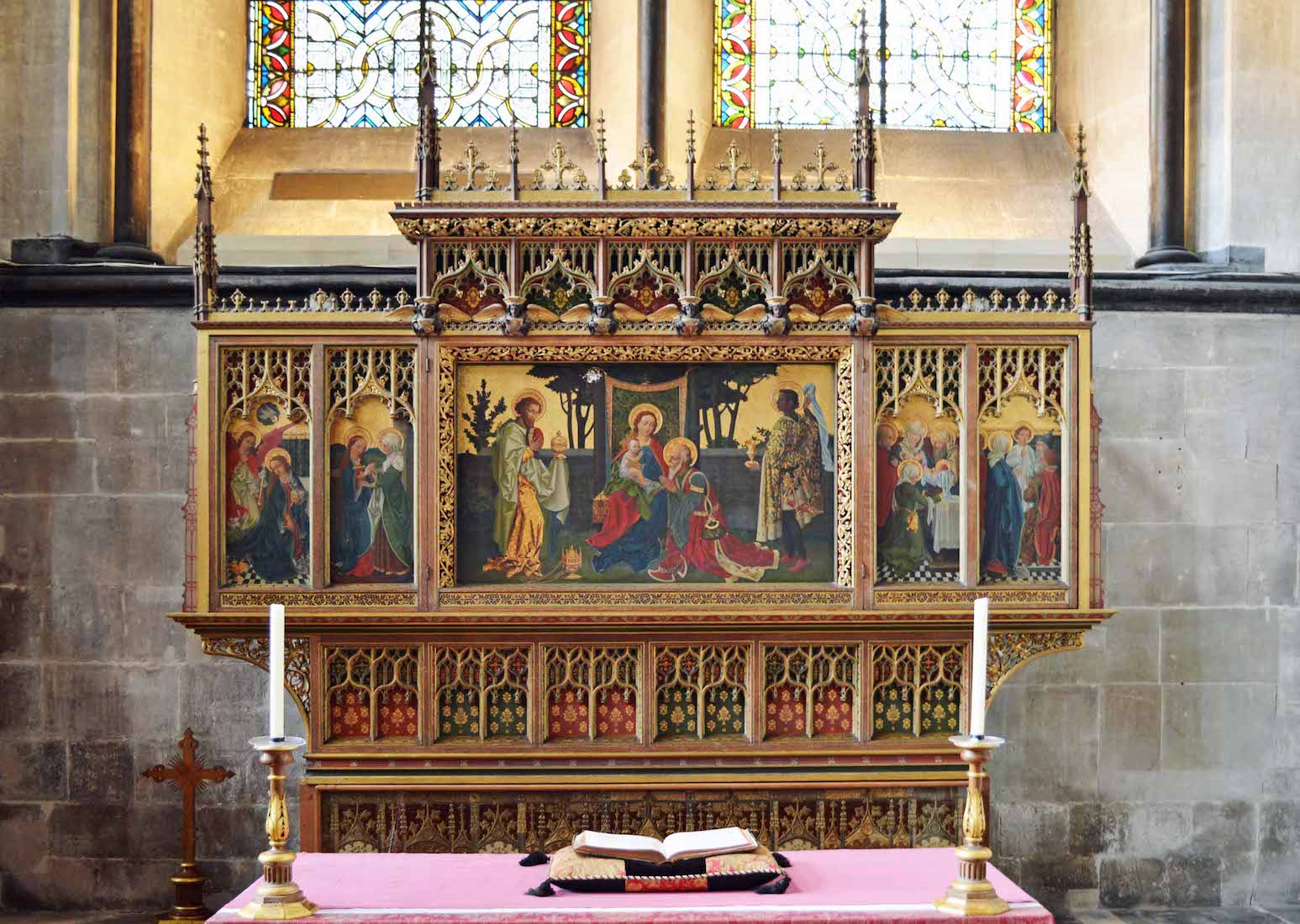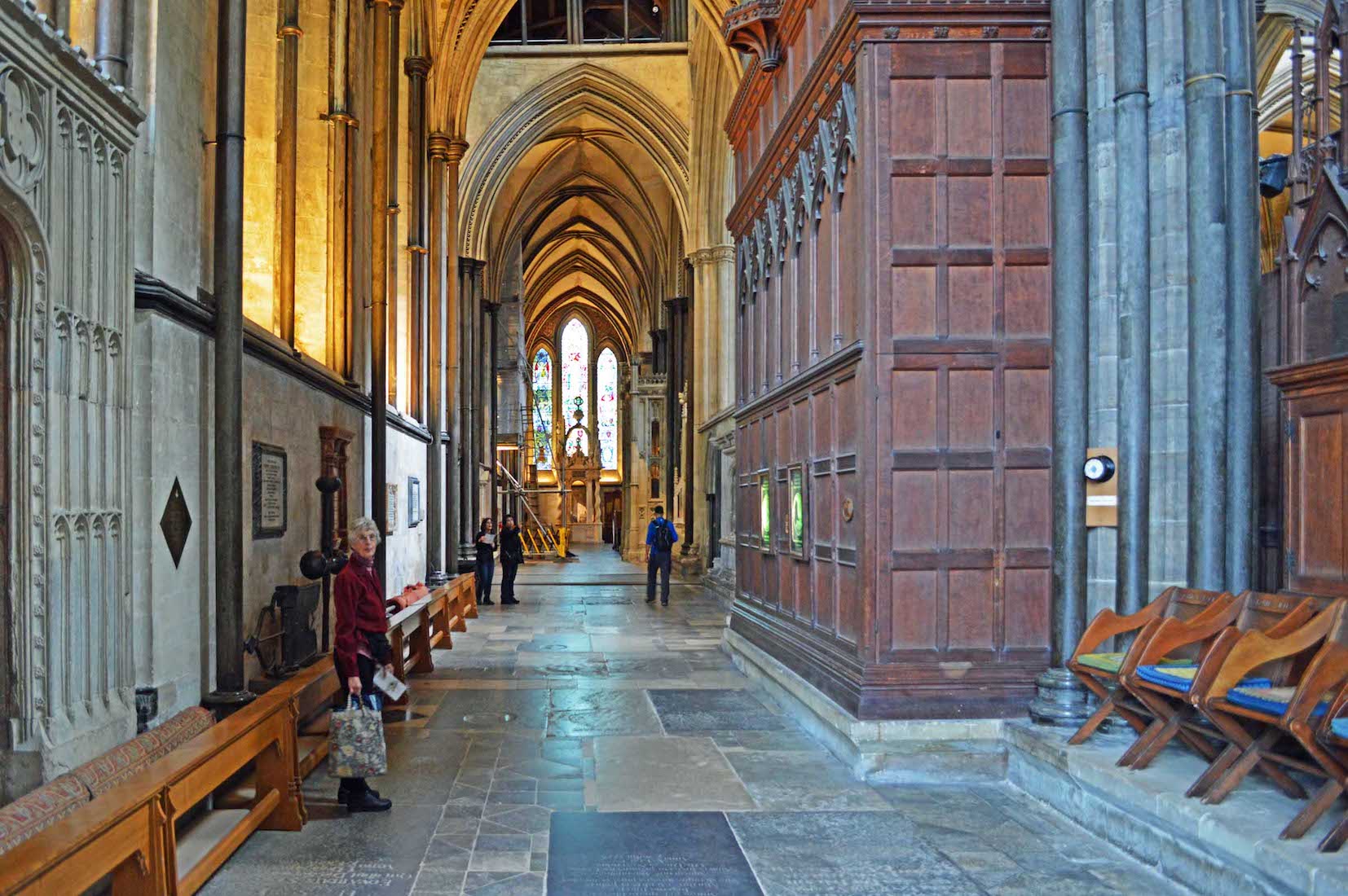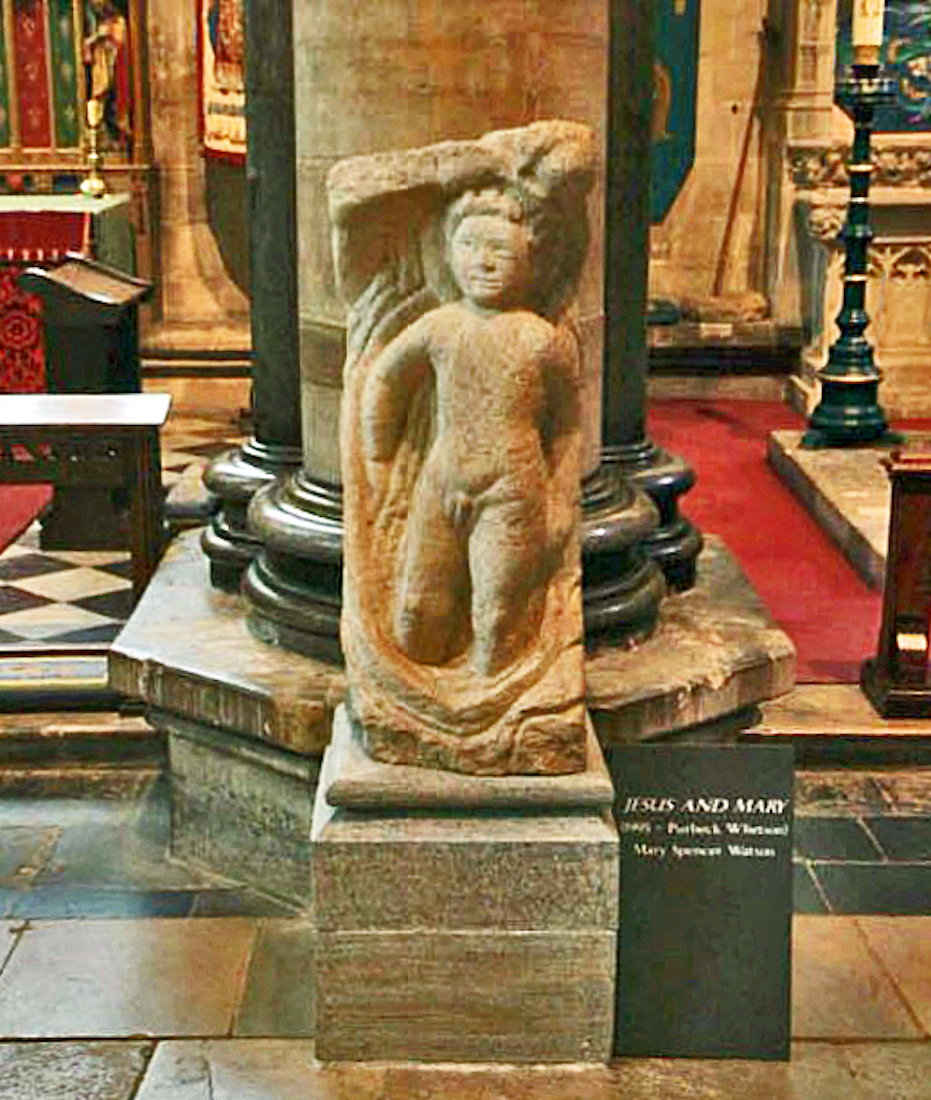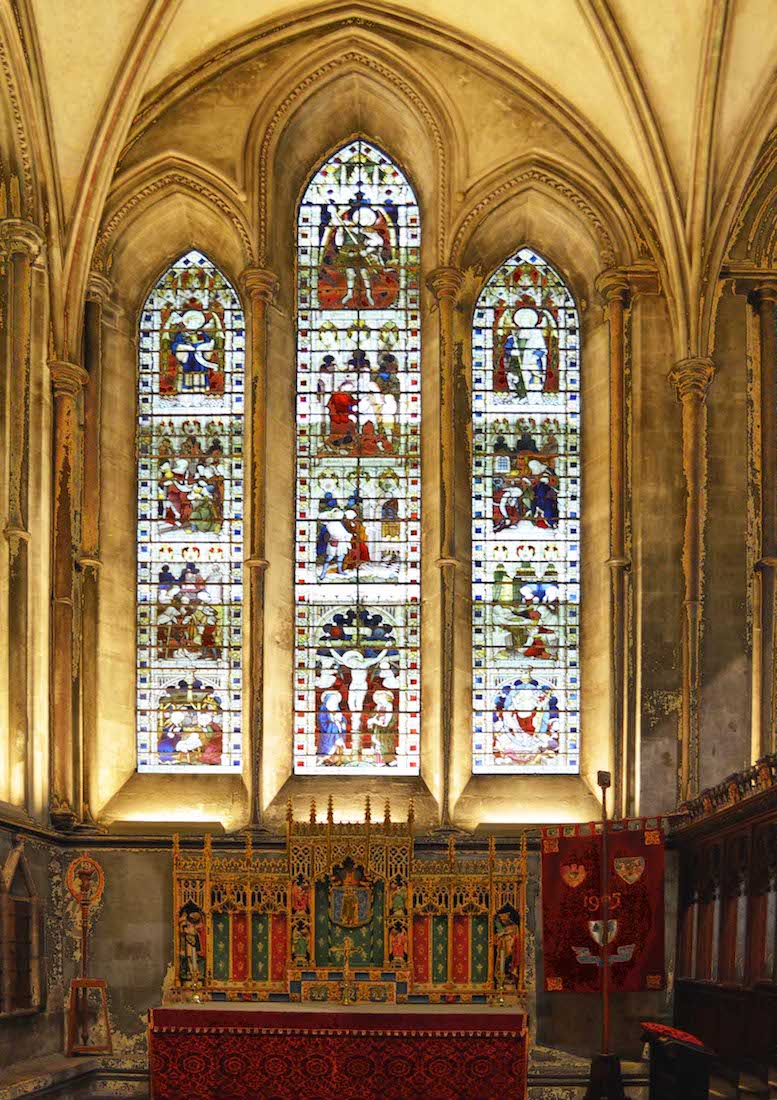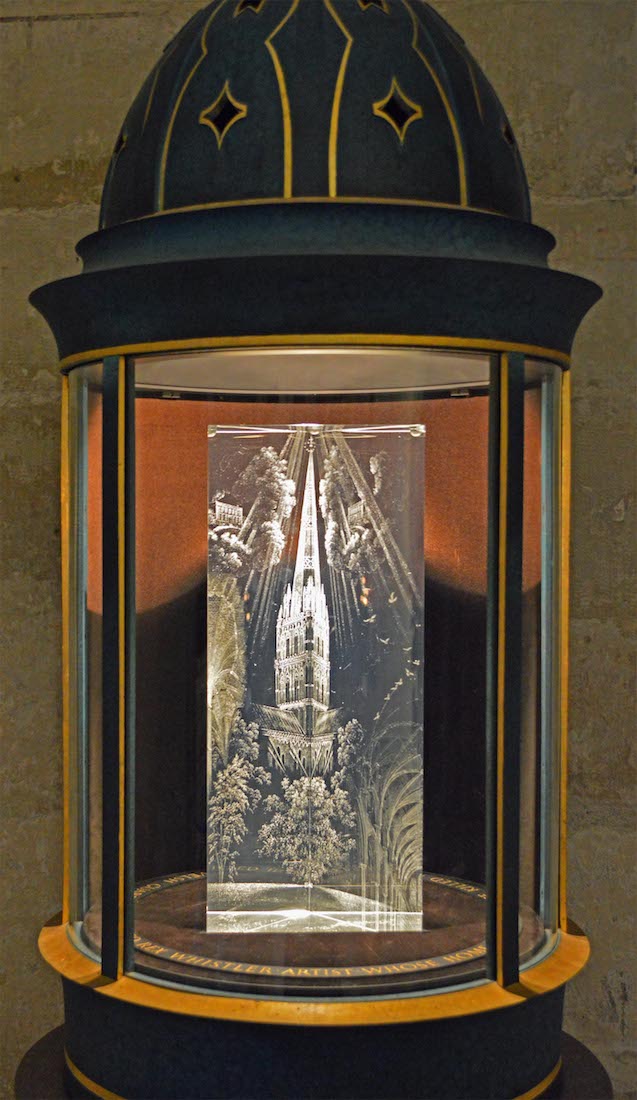41. LORD CHENEY TOMB
Nearby is the effigy of Lord Cheney [Wikipedia photo]. He was a supporter of Henry Tudor; he fought in the Battle of Bosworth (1485) and lived at Wardour Castle (15 miles West of Salisbury). Recent investigations have shown that Cheney was 2 metres tall!
42. BENT PILLAR AND BANNER
We pause now to look at the crossing, where the nave meets the transept. It lies below the central tower and spire. The tower is supported by great columns of dark Purbeck marble, which have suffered some considerable stress by the addition of the spire. The result of this is that the columns now show a noticeable bend and consequently the spire is no longer strictly vertical. At right, the Sursum Corda (Latin: ‘Lift up your hearts’ or literally, ‘Hearts lifted’) is the opening dialogue to the Preface of the Eucharistic Prayer or Anaphora in the liturgies of the Christian Church, dating back to at least the third century and the Anaphora of the Apostolic Tradition.
43. CROSSING ROOF
The roof above the crossing is beautifully ornate and decorated with colourful bosses.
44. SPIRE ALIGNMENT
A plate in the centre of the crossing shows where the apex of the spire should be, and its actual position several feet away (indicated by the blue arrow).
45. PULPIT
At the North East corner of the crossing, the 1865 pulpit shows carvings of prophets and preachers from the Bible.
46. CROSSING CRUCIFIX
In 2002 the Cathedral installed Marzia Colonna's crucifix. Although it appears to be made of stone, it is made entirely of wood and paper, rich in texture and detail.
47. LECTERN
And today the Bible is read during nave services from the brass lectern (c. 1850) situated here. The eagle is fairly standard but the base and support of the lectern may be unique to the Cathedral.
48. CROSSING STATUES
Pictured here is the figure of St Edwyn on the Southwest crossing column in memory of Edwin C. L. Parker. Not shown is the Southeast pillar figure in memory of Alfred Cecil Parr. This pillar figure on the Northwest crossing pillar is St Michael, in memory of Lt the Hon Hugh Trenchard.
49. ACROSS THE CROSSING
We turn to cross the Cathedral and explore the North transept. The phrase ‘sacred space’ comes to mind: there is no shortage of space in Salisbury Cathedral!
51. TRANSEPT WEST WALL
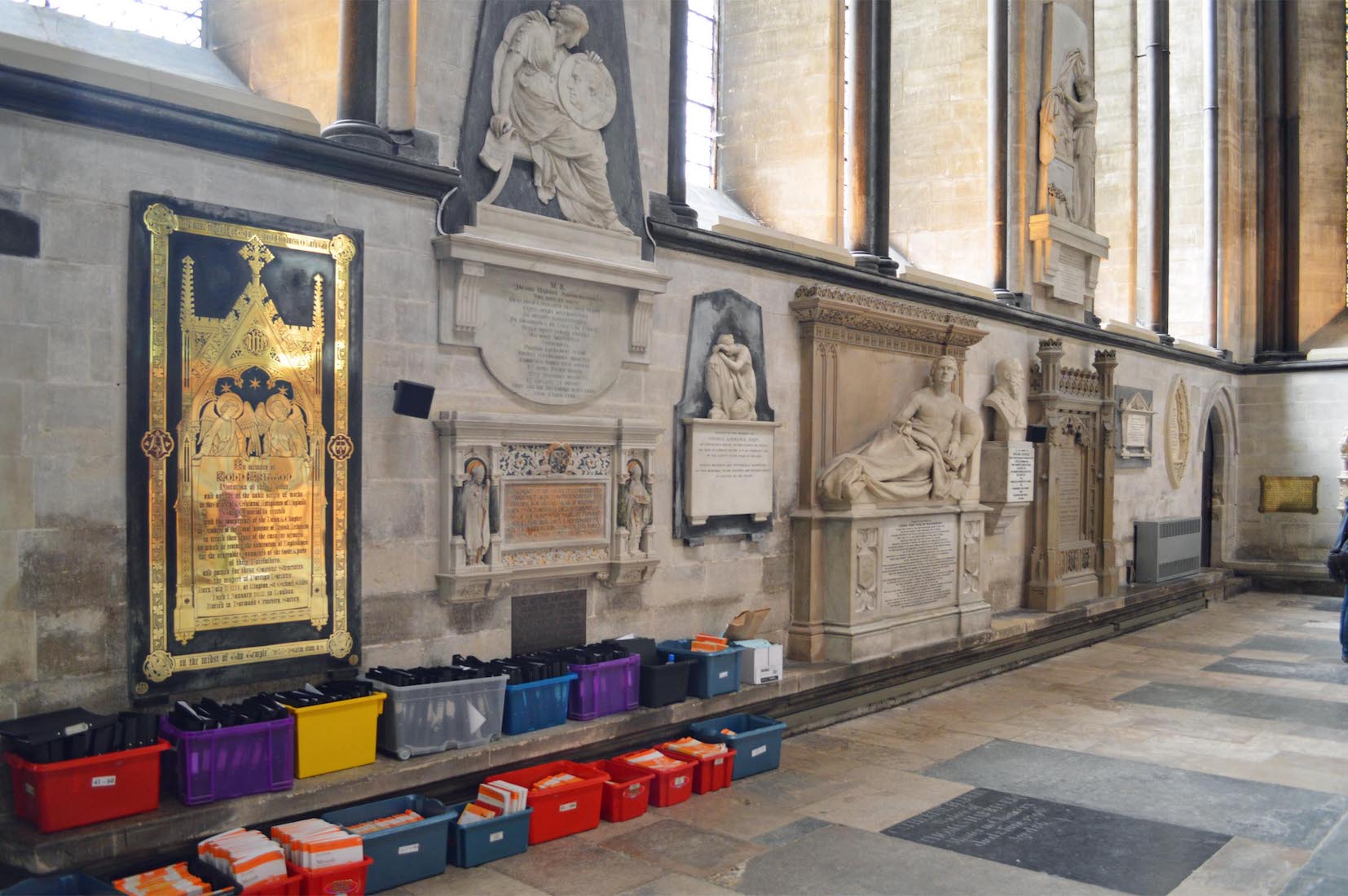
The West wall of the transept is lined with various plaques and memorials – along with some temporary miscellaneous storage!
52. SHERBORNE LECTERN
On the East Wall we find an interesting old lectern in memory of Harold, Bishop of Sherborne. Alongside the main transept area to the East is an attractive chapel.
53. TRANSEPT CROSS
We note here too the gold cross set against a background of grey organ pipes.
54. CHAPEL NORTH WINDOW
The North transept side chapel is the Chapel of St Thomas and St Edmund.
55. CHAPEL EAST WINDOWS
The left window features St Edmund (also known as Edmund the Martyr or Edmund of East Anglia). He died in 869, and was king of East Anglia from about 855 until his death. Central window: In context, St Thomas here is likely to refer to St Thomas Beckett (1118 – 1170). The window at right is harder ro interpret! The chapel has a stained glass window behind the front triptych, and three stained glass windows along the East wall.
56. CHAPEL TRIPTYCH
The attractive triptych shows Nativity scenes. Small weekday services are held here. A Parish Church of the same name as this chapel can be found nearby in central Salisbury City. .
57. NORTH QUIRE AISLE
Leaving the North transept we walk up the North Quire Aisle, noting the anemometer on the pillar of the first arch which measures the wind speed at the top of the spire.
58. DIVIDING CHERUB
We come to the Morning Chapel on the left, separated into two parts by a cherub!
59. WEST MORNING CHAPEL
Most of the windows here date from 1909 – 1920. Along the West wall is part of the original 13th century screen originally used to divide the Quire from the Nave.
60. PRISM
In this chapel we find an engraved glass prism – an unusual memorial to painter and illustrator Rex Whistler.


